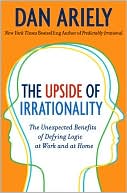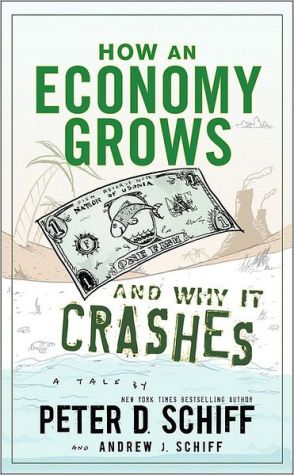Growing Public: Social Spending and Economic Growth Since the Eighteenth Century, Vol. 1
- Winner of the Allan Sharlin Award of the Social Science History Association \ - Co-winner of the Gyorgy Ranki Prize of the Economic History Association \ Growing Public explores the links between economic growth and social policies that redistribute income. Taxes and transfers have been debated for centuries, but only now can we get a clear view of the whole evolution of social spending. What kept prospering nations from using taxes for social programs until the end of the nineteenth...
Search in google:
Examines the question of whether social policies that redistribute income impose constraints on economic growth.
Preface to Volume IxvPart 1Overview1.Patterns and Puzzles3Controversy3The Road from Here4Taxing, Spending, and Giving in the Late Eighteenth Century7Poor Relief, Public and Private7The Elderly9Public Education9The Long Rise of Social Spending11The Robin Hood Paradox15Is the Welfare State a Free Lunch?16An Educational Puzzle192.Findings20Nine Conclusions20How Social Spending Emerged before World War II22Lessons from the Postwar Boom26Since 1980, Aging Has Brought New Budget Pressures27Unlocking the Free-Lunch Puzzle29How Welfare States Control the Disincentives30Early Retirement: A True, but Limited, Cost32The Pro-Growth Side of High Social Spending32Reconciling Europe's Unemployment with Its Satisfactory Growth33Two Cost-Cutting Principles in Democratic Welfare States34Part 2The Rise of Social Spending3.Poor Relief before 188039How Much Did Europe Give the Poor before 1880?40Private Charity in Early Modern Europe: A Miscellany of Pittances40The Amounts of Public Poor Relief to 188045How Europe Gave Relief and for What48The Eternal Search for the Worthy and Unworthy Poor48The Battle over Putting the Poor to Work49Indoor versus Outdoor Relief51Administrative Costs54What They Gave: Cash versus Aid in Kind55Who Received It56Town versus Country56American Private and Public Relief before the New Deal58How Much Public Relief Was Given59Private Charity in the United States and the Crowding Out Issue60Two Attacks on Outdoor Relief in New York65Summary654.Interpreting the Puzzles of Early Poor Relief67The Rise and Fall of England's Old Poor Law, 1780-183467Who Supported England's Old Poor Law?67The Reform Acts, Voice, and the Poor71The Rural-Urban Puzzle73If England Were Invisible: The Urban Bias in Poor Relief73England's Rural Southeastern Bias and the Boyer Model75An Extension to Scandinavia77The International Stagnation of Relief, 1820-188080The Predicted Effects of Extending the Franchise80The General Pre-1930 Pattern of Votes and Social Spending82Local versus Central Government: What Happened to the "Race to the Bottom?"84Summary: Political Voice and Poor Relief855.The Rise of Mass Public Schooling before 191487Overview87To Be Explained: Patterns in the Inputs into Mass Schooling88Competing Theories99Updating the Elite-Pressure Theories100Landlords and Toryism100Capitalist Social Control101Domineering Government102Dominant Religions102Vested Interests within the Educational Sector103The Role of Decentralization104Popular Votes, Public Schools105But What Caused Democracy?107Reverse Causation from Schooling to Democracy?107Religious Diversity and the Rise of Democracy and Schooling107Reinterpreting National Histories of Mass Schooling110France, the Baseline Case110The English Delay113Rethinking German Education115Decentralized North America122Summary: Elites, Votes, and Schools1266.Public Schooling in the Twentieth Century: What Happened to U.S. Leadership?128Who Are the Leaders?129In Years of Education129In Learning132International Test Scores at the End of the Twentieth Century132When Did This Pattern Emerge?138In Inputs into Education142Taxpayer Effort on Behalf of Education142Expenditures per Student142Teaching Inputs per Student143Teachers' Pay and Quality145Summing Up the United States' Symptoms150The Underlying Incentive Issues153Quantity Incentives versus Quality Incentives154Student Accountability155Competition among Schools157The Long Sweep of U.S. School Choice158Analyses of Local Experience with School Choice161Deviant California162Choice in Higher Education164Subsidized School Choice in Other Countries165Rewarding Individual Teacher Performance168Conclusions: Which Explanations Fit the Symptoms?1687.Explaining the Rise of Social Transfers Since 1880171Who Were the Pioneers before 1930?171Shared Fears from World Wars and the Great Depression176The Role of Political Voice179Democracies, Elite Democracies, and Full Democracies179Votes for Women182The Rate of Turnover of the Chief Executive183The Role of Aging: Gray Power?183Globalization and Safety Nets186Social Affinity: "That Could Be Me"186Summary188Part 3Prospects for Social Transfers8.The Public Pension Crisis193In an Older World, Something Has to Give194Pressures in the OECD Countries196Who Is Most Threatened by Population Aging?196Who Is Least Prepared?198How Will Budgets Be Adjusted?200Immigrants and Pensioners205Returning to a Fully-Funded System Is Unlikely207Summary2089.Social Transfers in the Second and Third Worlds210The Aging Trend Is Nearly Global211Special Pressures in Transition Economies212Third World Social Transfers218Are they on a Different Path?218East Asia Is Not So Different219A Different Kind of Pension Crisis221Global Divergence, Convergence, and the Robin Hood Paradox222Part 4What Effects on Economic Growth?10.Keys to the Free-Lunch Puzzle227The Familiar Cautionary Tales Miss the Mark228Disincentives on the Blackboard228Harold and Phyllis229Micro-Studies of Labor Supply230Simulations231Global Growth Econometrics233What Better Tests Show234How Can That Be True?234The Welfare-State Style of Taxing: Pro-Growth and Not So Progressive235Recipients' Work Incentives245The Poor May Face Lower Work Disincentives in the Welfare State245Early Retirement: Good Riddance to Old Lemons?249Does the Dole Also Harvest Lemons?252Some Growth Benefits of High Social Transfers253Active Labor Market Policies: Not Much There253Child Care Support and Career Investment in Mothers254Public Health Care257Why These Keys?26311.On the Well-Known Demise of the Swedish Welfare State264Who Proclaimed It and How264Sweden's Growth and Social Spending Since 1950267What Went Wrong after the 1970s?271Macroeconomic Policy272The Demise of Swedish Corporatism275What Role for Sweden's High Tax Rates?277What Survived: Pro-Growth Social Spending281Investing in Women's Work and in Child Care282Education and Retraining288Late Retirement289Conclusions: Why No Demise29112.How the Keys Were Made: Democracy and Cost Control296Democracy, Budget Size, and Budget Blunders297Big Budget, High Stakes297Illustrative Tax-Transfer Blunders299Dutch Disability Policy300Labour's Selective Employment Tax of 1966-1970300The Thatcher Poll Tax of 1989-1992301Universalism May Cost Less301On the Tax Side302The Expenditure Side305Hence No Retreat306Notes309Bibliography339Acknowledgments363Index365
\ From the Publisher"[Lindert] provides a valuable history of social spending and proposes a theory about why some nations spend more than others that is closely related to how well democracy works. This is a piece of research that is rich in insight and grounded in empirical evidence." Jeff Madrick, The New York Times\ "One great question of the early 21st century is whether...welfare states, facing massive commitments to aging populations, will themselves create new insecurities and injustices. Comes now economic historian Peter Lindert, who has thoroughly probed the welfare state, with a surprising message: relax...an important new book..." Robert J. Samuelson, Newsweek\ "...the most comprehensive historical and econometric examination of the essential value of public expenditures I have seen anywhere. By the conclusion of this tour, the reader is left with a clear view of a world in which public expenditures on human welfare not only do no harm to national growth trajectories, but one in which investment in the infrastructure of human capital formation is itself growth-enhancing. This core finding of Lindert's exhaustive research will appear radical, perhaps even heretical, to a generation trained in neo-classical economics, but he arrives at it by employing the best of the theory and methodology of that discipline. As such it will be hard to refute." Anne E. C. McCants, Associate Professor of History, Massachusetts Institute of Technology\ "What determines how much governments spend on health, welfare, education, and social security? What effect does this social spending have on economic growth? Peter Lindert gives new answers to these big questions, in a lucid and engagingly written book that ranges across the globe and from the eighteenth century up to the current day. His surprising finding is that social spending does not slow growth, at least in western democracies, and his gem of a book will be essential reading for historians, economists, political scientists, and modern-day policy makers." Philip T. Hoffman, Richard and Barbara Rosenberg Professor of History and Social Science, California Institute of Technology\ "Peter Lindert has written a dazzling book. He takes on one of the grand topics of economics the rise of social spending and offers us a remarkable combination of new data, historical insight, political analysis, and economic assessment. Amazingly, Lindert comes up with fresh, convincing, and important insights on issues that have been debated for decades. Two of Lindert's major conclusions are that the spread of democracy has historically played a pivotal role in the rise of social expenditures; and that social spending has not gravely weakened economic incentives and long-term economic growth, despite the drumbeat of criticisms from free-market devotees. Indeed Lindert concludes that the net national costs of social transfers, and of the taxes that finance them, are essentially zero.a This powerful book will be widely read and debated for many years to come." Jeffrey D. Sachs, Director, The Earth Institute at Columbia University\ "What determines social spending, also known as public education, also known as social security, also known as taking from the rich and giving to the poor? This question is the subject of much theoretical and empirical speculation and some moderately detailed previous work. Yet this magnificent summa by Peter Lindert blows away the field. He probes the historical and comparative rise of social spending in today's OECD countries and derives many new insights into the classic themes of social spending and elite behavior, democracy, inequality, religion, and ethnic divisions. He draws out the implications of his careful analysis for the future of the Third World and First alike. A must-read for anyone interested in big government, political economy, helping the poor, or simply the fate of human societies." William Easterly, New York University\ "Peter Lindert has given us a treatise on the economic and political forces driving social spending and of the effects of the welfare state that sweeps over time, over nations, and over disciplines. It is simultaneously comparativepoliticaleconomic history, demography, applied econometrics, political theory, and political economy. While few will agree with all of the often-surprising answers he gives to the most fundamental questions regarding the existence and the effects of public social welfare policies, no one will suggest that they are not bold and provocative. Growing Public is a most readable and insightful and, yes, irreverent volume that will be discussed by all concerned with these front-page issues." Robert Haveman, John Bascom Emeritus Professor of Economics and Public Affairs, University of Wisconsin-Madison\ "Growing Public greatly increases our understanding of the rise and the effects of social spending, and is a welcome empirically based response to the ever-growing economic literature arguing that the costs of the welfare state are unacceptably high." Industrial and Labor Relations Review, George R. Boyer\ \ \








